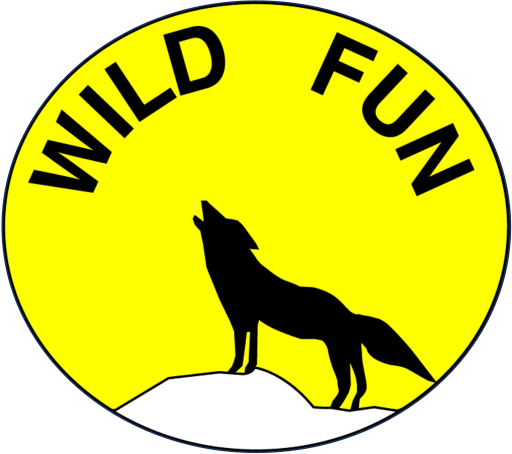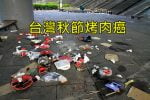「永續旅遊」(Sustainable Tourism)是什麼?怎樣的旅遊方式或經營管理方式可以稱為永續旅遊?
2000年11月11-19日在美國紐約州Mohonk Mountain House聚集20個國家及國際組織代表通過永續旅遊及生態旅遊準則與認證架構,該協議稱為默漢克協定(Mohonk agreement)。(參見https://en.wikipedia.org/wiki/Mohonk_agreement)(該協定中文翻譯稿請參見內政部營建署2008年6月出版之「台灣地區生態旅遊永續發展策略」第24-28頁,可上網下載https://np.cpami.gov.tw/index.php?option=com_content&task=view&id=2688&Itemid=10205。)
歷經多年,全球目前有百餘個認證體系與實做多多少少都與「永續旅遊」有關,但還是定義分歧,各有一套看法,因此由包含聯合國旗下UNF(United Nations Foundation,聯合國基金會)、WTO(World Tourism Organization,國際旅遊組織)、UNEP(United Nations Environment Programme,聯合國環境規劃署)及其他國際組織如IUCN(International Union for Conservation of Nature,世界自然保育聯盟)、RA(Rainforest Alliance,國際雨林聯盟)、TIES(The International Ecotourism Society,國際生態旅遊協會)等24個關心人文歷史、人權、自然生態、旅遊發展的國際組織組成研訂「永續旅遊準則」(Sustainable Tourism Criteria)的委員會https://www.sustainabletourismcriteria.org/content/view/163/345/,並將在今(2008)年十月召開的IUCN會員大會World Conservation Congress上定案並向全世界公布,作為將來全球實踐永續旅遊的依據。
今(2008)年五月永續旅遊準則初稿第四版完成,依經營管理面、社區面、文化面及環境面四大部分制訂相關準則,研擬團隊將之放在網站上徵求全球旅遊業者及關心的民眾上網瞭解並回饋意見,以求制訂準則更周全。
您可以點閱英文網站https://www.sustainabletourismcriteria.org/瞭解細節,您也可直接進入https://www.sustainabletourismcriteria.org/index.php?option=com_content&task=view&id=97&Itemid=242 進行意見回饋,或進入https://www.sustainabletourismcriteria.org/index.php?option=com_content&task=view&id=58&Itemid=188 看準則英文原稿。
底下是我與張顧獻先生合譯並請中英文造詣俱佳的美籍美語教師陶維極老師審校的中英文對照版本,敬請參考並指正。
Sustainable Tourism Criteria Version 4
永續旅遊準則初稿 第四版 20080804翻譯
- Demonstrate effective sustainable management. 展現有效的永續經營管理方式
A.1. The company has implemented a long-term sustainability management system that is suitable to its reality and scale, and that considers environmental, sociocultural, quality, health, and safety issues. 業者已經實施長期的永續經營管理系統,該系統適用於業者現狀及其規模,也考慮到環境、社會文化、品質、健康及安全等要項。
A.2. The company is in compliance with all relevant legislation and regulations (including, among others, health, safety, labor, and environmental aspects). 業者經營皆合於相關法律規章,包括健康、安全、勞工及環境等各方面。
A.3. All personnel receive training regarding their role in the management of environmental, sociocultural, health, and safety practices. 所有職員皆接受有關環境、社會文化、健康及安全等方面的教育訓練,以瞭解其經營管理之角色與任務。
A.4. Customer satisfaction is measured and corrective action taken where necessary. 評量遊客滿意度並在必要時採取改善措施。
A.5. Promotional materials are accurate and complete and do not promise more than can be reasonably expected by customers. 促銷內容必須完整與正確且不要作超過遊客正常預期的承諾。
A.6. Design and construction of buildings and infrastructure: 建物及設施之設計與建造:
- · A.6.1. comply with local zoning and protected or heritage area requirements; 合於土地分區管制及保護區或文化遺產之相關規定;
- · A.6.2. respect the natural or cultural heritage surroundings in siting, design, impact assessment, and land rights and acquisition; 在取得土地、環境影響評估、設計時,要尊重區位內的自然生態或文化遺產;
- · A.6.3 use locally appropriate principles of sustainable construction; 採用適合當地永續性建設的方法;
- · A.6.4 provide access for persons with special needs. 提供有特殊需求的人們得以親近的機會。
A.7. Information about and interpretation of the natural surroundings, local culture, and cultural heritage is provided to customers, as well as explaining appropriate behavior while visiting natural areas, living cultures, and cultural heritage sites. 提供周遭自然資源、在地文化、文化遺產之相關資訊與解說,同時要求遊客在參訪自然區域、在地生活文化及文化遺址時應遵守行為規範。
- Maximize social and economic benefits to the local community and minimize negative impacts. 儘量提升在地社區之社會與經濟利益並降低負面影響。
B.1. The company actively supports initiatives for social and infrastructure community development including, among others, education, health, and access to sanitation. 業者積極支持社區之社會與基礎建設之相關發展,包括教育、健康、公共衛生等方面。
B.2. Local residents are employed, including in management positions. Training is offered as necessary. 雇用在地居民(任用職務包含管理階層)並施以教育訓練。
B.3. Local and fair-trade services and goods are purchased by the business, where possible. 儘可能採購當地或是公平交易的服務或物品。
B.4. The company facilitates local small entrepreneurs to develop and sell products that are based on the area’s nature, history, and culture (including food and drink, crafts, performance arts, agricultural products, etc.) 業者應促進在地小生意發展及販賣生產自當地自然、歷史、文化的產品(例如食物、飲料、工藝品、藝術展演、農特產品等)。
B.5. A code of conduct for activities in indigenous and local communities has been developed, with the consent of and in consultation with the community. 有關牽涉原住民或當地社區之相關活動,皆已建立經過社區協商並同意的管理機制。
B.6. Policies are implemented against commercial sexual exploitation, particularly of children and adolescents. 業者絕不發展性產業,尤其是兒童與青少年之性交易。
B.7. The company is equitable in hiring women and local minorities, including in management positions, while restraining child labor. 業者公平雇用婦女與少數民族(任用職務包含管理階層),並禁止雇用童工。
B.8. All employees are under legal protection and paid a living wage. 所有員工皆受法律保障且領有能夠維持生活的工資。
B.9. The activities of the company do not jeopardize the provision of basic services (such as water, energy, or sanitation) to neighboring communities or access to culturally and spiritually important sites. 業者活動不能危害到周遭社區之生活基本供給(如水、能源或公共衛生)或影響到前往文化、心靈聖地的途徑。
- Minimize negative impacts to cultural heritage and maximize benefits. 對文化遺產的衝擊降到最小,並將其效益發揮到最大
C.1. The company follows established guidelines or a code of behavior for visits to culturally or historically sensitive sites, in order to minimize visitor impact and maximize enjoyment. 業者須遵守造訪較脆弱之文化及歷史景點之指導方針或行為規範,以期儘量減少旅客所帶來的衝擊及儘量展現旅遊樂趣。
C.2. Historical and archeological artifacts are not sold, traded, or displayed, except as permitted by law. 除了法規允許外,不可販售、交易或陳列具歷史及考古意義的手工藝品。
C.3. The business contributes to the protection of local historical, archeological, and cultural properties, and does not impede access to them by local residents. 業者應促進對當地歷史、考古及文化資產的維護,並且不阻礙當地居民使用或接近該資產的權利
C.4 The business uses elements of local art, architecture, or cultural heritage in its operations, design, decoration, food, or shops, while respecting the intellectual property rights of local communities. 業者運用當地藝術、建築或文化遺產的元素於其經營、設計、裝潢(飾)、食品或店面時,須尊重當地社區的智慧財產權。
- Minimize environmental negative impacts and maximize benefits. 避免對環境產生負面衝擊並創造最大效益。
D.1. Conserving resources 保存資源
- · D.1.1. Purchasing policy favors environmentally friendly products, for building materials, capital goods, food, and consumables. 採購建築材料、生財資產、食品及消耗品時應優先考慮環保產品。
- · D.1.2. The purchase of disposable and consumable goods is measured, and the business actively seeks ways to reduce their use. 業者應衡量是否一定要購買拋棄式用品及消耗品,並積極設法減少使用該類產品。
- · D.1.3. Energy consumption should be measured, sources indicated, and measures to decrease overall consumption should be adopted, while encouraging the use of renewable energy. 評估能源使用及確認其來源並運用有效措施減少整體耗能,也鼓勵使用再生能源。
- · D.1.4. Water consumption should be measured, sources indicated, and measures to decrease overall consumption should be adopted. 評估水資源之使用及確認其來源並運用有效措施減少整體耗水量。
D.2. Reducing pollution 減少污染
- D.2.1. Greenhouse gas emissions from all sources controlled by the business are measured, and procedures are implemented to reduce and offset them, as a way to achieve climate neutrality. 業者須衡量所有會排放溫室氣體的來源,並實施減少及補償的機制以期達成氣候平衡
- · D.2.2. Wastewater, including gray water, is treated effectively. 應有效處理廢污水(含非工業廢污水)。
- · D.2.3. A solid waste management plan is implemented, with quantitative goals to minimize waste that is not reused or recycled. 實施固體廢棄物管理計畫,該計畫應設量化目標以期將不再利用或再循環之廢棄物減到最少。
- · D.2.4. The use of harmful substances, including pesticides, paints, swimming pool disinfectants, and cleaning materials, is properly managed, minimized, and substituted, when available, by innocuous products. 應適當管理、減量或替代有害物質的使用,包含殺蟲劑、塗料、游泳池消毒劑、清潔用品等,並儘可能使用無害產品。
- · D.2.5. The business implements practices to reduce pollution from noise, light, runoff, erosion, ozone-depleting compounds, and air and soil contaminants. 業者應採取措施以減少來自噪音、亮光、逕流、腐蝕、耗損臭氧層之複合物、空氣及土壤污染物所造成的污染。
D.3. Conserving biodiversity, ecosystems, and landscapes 保存生物多樣性、生態系及地景
- · D.3.1. Protected, rare, or threatened species are not consumed, sold, traded, or displayed, except where this is part of a regulated activity that enhances their conservation. 除非是為了促進生態保育而有所管控的活動,否則不可食用、販售、貿易買賣或陳列受保護、稀有或生存遭到威脅的物種。
- · D.3.2. No captive wildlife is kept, except for licensed conservation activities. 除了許可之保育行為外,不保留被捕獲的野生動物。(譯註:應予野放)
- · D.3.3. The business uses native species for landscaping and restoration, and takes measures to avoid the introduction of invasive alien species. 業者應使用原生物種造景及整建,並予以監控以避免引進外來入侵種。
- · D.3.4. The business contributes to the support of biodiversity conservation, including by supporting natural protected areas and areas of high biodiversity value. 業者應支持生物多樣性保育,包括支持或贊助設立自然保護區及高生物多樣性價值的區域。
- · D.3.5. The business ensures that interactions with wildlife do not produce adverse effects on the individuals or the viability of populations; and that any disturbance of natural ecosystems is minimized, rehabilitated, or there is a compensatory contribution to conservation management. 業者須保證與野生物的互動過程不會對個體或族群的生存造成不良後果;在保育經營管理上須儘量減少對野生物的驚擾、採取復育或補償措施等。
因部落格無法附加檔案供下載,如需word檔,歡迎來信[email protected]索取。







